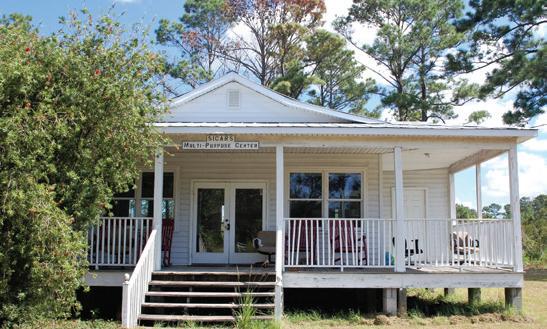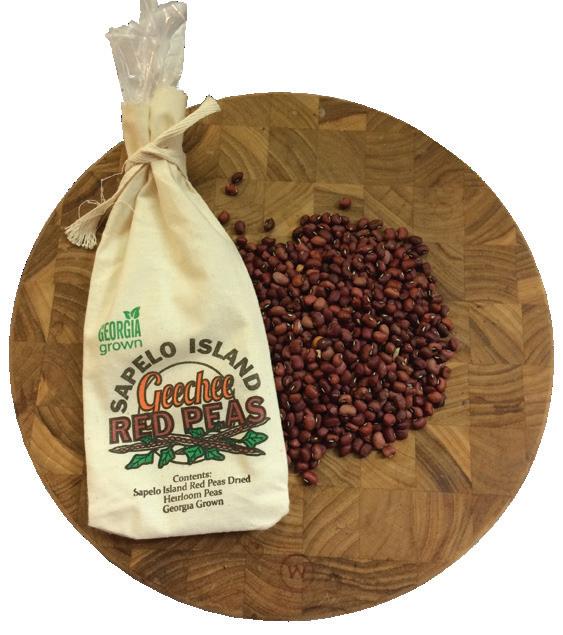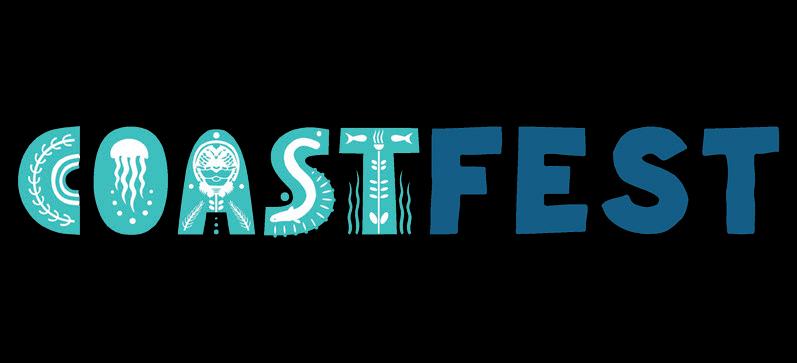
9 minute read
Part III
In previous articles about Sapelo Island we explored the South End, with the Reynolds Mansion and the wealthy planters who previously occupied the island. In Part I of the Sapelo Series we explored the North End, and in Part II we took a look at the UGA Marine Institute and the Sapelo Island National Estuarine Research Reserve. All of which are important aspects of this unique place. But as I said in Part I, the heart of the place beats in her people, which are the focus of Part III.
Article and Photos By Amy Thurman
Advertisement
Opposite Page, Delving into the past.
Top: A huge old oak near an area called Hanging Bull. There are two theories as to how this area got its name. One story is that a cow was found in a tree after a hurricane. The other story, much more grim, is that a young black man was hanged there.
Bottom: Raccoon Bluff Baptist Church. The congregation was established in 1866, the church was built in 1900 and was restored in 2000. Services are still held here. During services, the congregation faces east, toward Africa.
This Page, Above: This annex of the First African Baptist Church was moved from Raccoon Bluff where it was originally a school house.
Itook the first morning ferry from Meridian over to Sapelo, grateful for the breeze on the crossing as it was already hot as blazes at 8:30. Maurice Bailey, my host this visit, picked me up at the ferry dock and thankfully, had the AC cranked all the way up in his truck. It was Wednesday, therefore a workday for him, so my role was to ride shotgun while he got things done and intersperse his chores with our conversation. Ride around, take photos, ask questions and hear stories? I’m good with that!
Our first stop was the post office where he had some documents to fax. While he did that, I wandered the grounds and looked at the native species garden, the ruins of the former sugar mill, and the tidal creek that runs beside the property.
Back in the truck, Maurice and I talked first about his family. His mother, the late Cornelia Walker Bailey, was the sometimes official, sometimes unofficial spokesperson for the African community on Sapelo. Born and raised on the island, she published a book about growing up on Sapelo in the Geechee culture, God, Dr. Buzzard, and the Bolito Man. I read it last fall and loved it and told Maurice how much I dearly wished I could have met his mama. If you get a chance, pick up a copy. Mrs. Bailey was a gifted storyteller, drawing you in and making you feel as if she were sitting right beside you.
We also talked about Maurice’s cousin, Allen Bailey, the NFL defensive tackle who was formerly with the Kansas City Chiefs and has now come home to the South to play for the Atlanta Falcons. He’s a tremendous source of pride to Sapelo residents!
From there we moved on to the community and its people. To understand Sapelo today, we need to look first to the past. During the 1850s, 385 slaves worked Thomas Spalding’s plantation. After the Civil War, a group of three freedmen formed the William Hillary Company and purchased large plots of land in and around Raccoon Bluff. Their intent was to finance the land themselves, making it easier for others on the island to purchase and finance plots without fear. Original settlements on Sapelo in the years after Emancipation also included Belle Marsh, Hogg Hammock, Shell Hammock and Lumber Landing. The First African Baptist Church, established in 1866 at Hanging Bull, then moved to Raccoon Bluff, where there was also a school for the island’s children.
Much of the original Spalding Plantation was later sold to Howard Coffin, who then sold it to R. J. Reynolds in the 1930s. Reynolds set about “consolidating” the landholdings of the island’s black population (In her book, Mrs. Bailey goes into a bit of detail on the less-than-ethical methods Reynolds used to accomplish his goals), until eventually all of the original families and their descendants lived in the community of Hogg Hammock. The church and school at Raccoon Bluff still stand, but today, Hogg Hammock is the only settlement remaining.
When the Civil War ended, there were thought to be about 44 families throughout the Sapelo Island settlements. Only seven families remain today, with less than 30 full-time residents still on the island, and those numbers continue to decline.
This is a devastating issue. There are few remaining Geechee/ Gullah communities in the Southeast, with Sapelo being the only one on Georgia’s barrier islands, and this unique culture is disappearing. But for the descendants, its deeply personal. Regardless of your nationality or race, imagine the sense of loss of seeing your people and your way of life disappear with each passing year.
The reasons this is occurring are simple. The residents have to leave the island to find jobs, and to marry and have children. While commuting to and from the mainland for a job is possible, though challenging, asking your spouse to leave the comforts and conveniences of the mainland for life on an undeveloped island is another thing entirely. And so, most young adults leave, and as the population ages and passes on, their property is often sold by heirs who no longer have lives on, or ties to, Sapelo.
The solutions to this crisis are as complex as the reasons behind it are simple. In an effort to find solutions, SICARS was founded. The Sapelo Island Cultural and Revitalization Society, of which Maurice is currently the president, was founded in 1993 by Hogg Hammock resident and non-resident descendants with the hope of keeping the community and the culture alive and even seeing it flourish.
So what is this way of life SICARS is intent on preserving? As Maurice drove around the island he shared stories of his youth and I began to see and understand more clearly.
Being so isolated, the descendants weren’t as heavily influenced by the outside world, so their day-to-day lives didn’t change much through the generations. With the exception of indoor plumbing and electricity, Maurice and the other descendants who grew up on Sapelo lived much like their ancestors.
When Maurice was a boy, life was still simple. He and his siblings and cousins learned to navigate around the island using landmarks. “Past the magnolia tree,” or “over near the pile of bricks on the ground.” On Sundays, his parents would drive the kids around and show them old home sites, where various ancestors had lived, and tell stories about the people and the island. The houses at former settlements like Belle Marsh, where Mrs. Bailey grew up, are gone, houses were taken apart and the materials reused at the new homesites in Hogg Hamock. But the geography remains, as do the memories.
Boys growing up on the island often went hunting at night, even on school nights. “We’d go hunting after school and might be out all night, then go home in time to go back to school in the morning,” Maurice recalls.
“We'd look for mashbarrels,” he said, chuckling. My first thought, this being the South, was a group of teenage boys out looking for the product of someone’s still. Maurice and I are about the same age and that’s sure what the boys I grew up around would have been doing out at night!
But no. A mashbarrel, or marsh barrel because of the way it
Opposite Page: This building, constructed in the 1920s, was originally the Farmer's Alliance. Since then it has served as home to the Eastern Stars, as a Mason Lodge, a school, and even a juke joint! The site is now where the Culture Day festival is held.
Above: Sapelo Island Geechee Red Peas are planted, grown and harvested as a means of preserving the Geechee culture, as well as raising funds for SICARS. Delicious!
Below: The sugar cane crop has been slightly controversial but is anticipated to be a profitable fundraiser for the community.

SICARS - Saving a Culture
How do you jumpstart an economy on an undeveloped island, especially when most of the land is owned by the state? How do you entice descendants to stay, or in the case of those who’ve left, to return? How do you persuade heirs in distant locations not to sell property they inherit when they can get top dollar for it? All of those things present their own set of challenges. But the community is trying.
One step has been to grow Sapelo Island Geechee Red Peas from heirloom seeds and sell them, with some of the proceeds then being used to expand the crop. Each year the crop has grown larger, with the 2019 crop being the largest to date. The peas come with a recipe to prepare them and an information card that reads, “Brought from West Africa, these Geechee Red Peas are planted by hand on Sapelo Island. They are then harvested, shelled and packaged for you by hand. Part of their deep flavor comes from their genetic heritage; part of their deep flavor comes from all the hard work that has gone into growing them for you.”

Some proceeds from the sale of the peas also went to begin planting sugar cane. It takes a few growing seasons for the crop to be large enough to harvest and when it is, the production of cane syrup will begin. Bottles of the syrup will be available for purchase and proceeds will go back into the community.
Growing sugar cane could be seen as reminiscent of slavery, given that the islander’s ancestors were forced to grow the cane and process it. But it is part of the descendant’s history and to take it as their own and make it benefit the community now, turns something negative into something beneficial.
As the red pea and sugar cane crops grow and prosper, SICARS leadership plans to also plant okra, garlic and indigo, hopefully as soon as next year. The planting, growing and harvesting of these crops could provide two full-time jobs and three seasonal jobs for island residents, thereby providing that small jumpstart to a local economy.
“We’ll be showing future supporters that we’re helping ourselves,” Maurice said. “Keeping these projects going helps keep our community and our culture alive.” looks in the water, is a gator. Also called a landeau.
Another project SICARS is planning to undertake is bringing back the annual Culture Day festival, celebrating Geechee/ Gullah culture through songs, stories, dance, traditional food, arts and crafts, church services and children’s activities. The event draws hundreds of people and helps raise awareness and funds while also being educational and entertaining. The event has been cancelled in recent years due to weather, but plans are underway to host it again in 2020.
Other goals, include a museum to preserve artifacts and other physical pieces of Geechee history, which requires archival quality display cases that are costly, and a project to sponsor an island resident to get training and serve as a mechanic in the community – a much-needed trade.
In addition to wild game, hogs were raised for meat. Maurice fondly recalled “Smokin’ time.” The men in the community would go from home to home butchering hogs while the women and older kids took care of processing. The meat would be put in homemade salt boxes to cure for several days, then moved to a smokehouse, where it would remain until it was eaten, with pieces cut off as needed for meals throughout the winter. It was a big event in the small community, turning a chore into a festive atmosphere as families talked and laughed and cooked together.
Making use of what could be found in the waters surrounding and running through the island was a source of food as well. Fish, shrimp and oysters were staples. “We’d push our bateaus in the water and head out to the Big Hole to fish. The anchor might be anything. A brick, a piece of metal, anything would work.”
In some ways life on the island was what’s now referred to as subsistence living, but if you look more closely you’ll see that it was resourceful and thrifty. Maurice recalls straightening old nails to reuse, rather than throwing them away and buying new. I suppose that like most things in life, the difference between thrifty and poor depends on your perspective.
“My grandfather always said, ‘All you got in life is God, your word and a piece of land. You got that, you got all you need,’” Maurice said. There is no simpler truth.
The Geechee culture is a unique and beautiful combination of old stories and songs, a spoken language, family, food, worship and history. I sincerely hope SICARS and the Hogg Hammock community are successful in their efforts to protect and preserve it. For more information about the Geechee community on Sapelo Island and SICARS, visit: www.sapeloislandga.org


Behavior Cemetary was established around 1805. The area was originally Behavior Community and the ruins of slave quarters have been discovered nearby. Loved ones are buried with their feet toward the east, toward the motherland, and often with a favorite possession so they won't be lost or lonely in the afterlife. Although many markers have been lost over the centuries, the cemetary is now maintained by volunteers in the community.
Saturday, October 5, 2019 10 am - 4 pm Mary Ross Waterfront Park, Brunswick Interactive learning and fun activities for the whole family!










